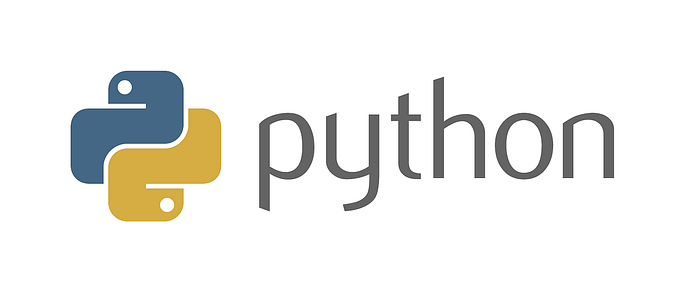반응형
1. Databricks REST API 호출 구성 요소
- Databricks workspace 인스턴스 이름
- REST API 작업 유형 (예: GET, POST, PATCH 또는 DELETE)
- 지정된 클러스터에 대한 정보를 가져오는 REST API 작업 경로 (예: /api/2.0/cluster/get)
- Databricks 개인 액세스 토큰과 같은 Databricks 인증 정보
- REST API 작업에 의해 지원되는 임의의 요청 페이로드 또는 요청 쿼리 파라미터 (예: 클러스터의 ID)
2. Databricks REST API Return 값
- REST API 호출은 일반적으로 클러스터의 요청에 대한 정보를 포함하는 응답 payload를 반환
- 응답 payload는 일반적으로 json 형태
curl --request GET "https://${DATABRICKS_HOST}/api/2.0/clusters/get" \
--header "Authorization: Bearer ${DATABRICKS_TOKEN}" \
--data '{ "cluster_id": "1234-567890-a12bcde3" }'
{
"cluster_id": "1234-567890-a12bcde3",
"creator_user_name": "someone@example.com",
"...": "...",
"cluster_name": "My New Cluster",
"...": "...",
"autotermination_minutes": 15,
"...": "...",
"state": "TERMINATED",
"state_message": "Inactive cluster terminated (inactive for 15 minutes).",
"...": "..."
}
3. Rate limits (특정 시간 내에 할 수 있는 API 호출 수)
- 과부하에서도 높은 서비스 품질을 보장하기 위해 모든 REST API 호출에 대해 rate limit을 적용 (https://docs.databricks.com/en/resources/limits.html#limits-api-rate-limits)
- rate limit을 초과하는 경우 응답 상태 코드 429를 반환 (https://developer.mozilla.org/ko/docs/Web/HTTP/Status/429)
4. Databricks REST API 사용 이유
- 자동화 및 오케스트레이션
- Databricks API를 사용하면 다양한 작업과 워크플로를 자동화하여 수동 개입을 줄이고 프로세스를 간소화
- 기존 도구와 통합
- 데이터 생태계의 다른 도구 및 서비스와 원활하게 통합 가능
- 모니터링 및 관리
- 모니터링 및 관리 기능에 대한 액세스를 제공하여 클러스터, 작업 및 노트북의 성능을 추적 가능
- 보안 및 액세스 제어
- API를 사용하면 보안 및 액세스 권한을 세밀하게 제어 가능
- 효율성 및 생산성
- 일상적인 작업과 프로세스를 자동화하여 효율성과 생산성 향상
5. Databricks REST API를 사용하기 위한 공통 설정
- Databricks 호스트 이름
- 작업 영역 URL에서 Databricks 호스트 이름을 얻을 수 있음
- 예: https://example.databricks.com/
- Databricks 사용자 액세스 토큰
- 인증하려면 Databricks 사용자 액세스 토큰을 생성 필요
- Databricks 사용자 액세스 토큰을 생성 방법
- Databricks Workspace에 로그인
- 오른쪽 상단에 있는 사용자 이름 클릭
- 사용자 설정을 클릭
- 설정 > 개발자 설정 > 액세스 토큰으로 이동
- 새 토큰 생성을 클릭
- 코멘트 및 토큰의 수명(일) 작성
- 토큰 복사

6. Databricks REST API 사용 방법
- Databricks API Documents : https://docs.databricks.com/api/workspace/introduction

- Curl 요청

- 클라이언트 URL의 약자
- 네트워크 요청을 위한 다목적 명령 줄 도구이자 라이브러리
- HTTP, FTP, SMTP 등 다양한 프로토콜을 지원
- 웹 서비스 및 API와 상호 작용을 위해 사용
- Databricks API 실행 방법
- 환경 변수 설정
set DATABRICKS_HOST=example.databricks.com/ set DATABRICKS_TOKEN=dapixxxxx - GET request: List all cluster
curl --request GET "https://example.databricks.com/api/2.0/clusters/list" --header "Authorization: Bearer dapi#######################" - POST request: Start terminated cluster
curl --request POST "https://example.databricks.com/api/2.0/clusters/start" --header "Authorization: Bearer dapi#######################" --data "{\"cluster_id\": \"1015-073040-t4hw9fg1\"}" - PATCH request: Update cluster permissions
curl --request PATCH "https://example.databricks.com/api/2.0/permissions/clusters/1015-073040-t4hw9fg1" --header "Authorization: Bearer dapi#######################" --data "{\"access_control_list\": [{\"user_name\": \"abc@xyz.com\", \"permission_level\": \"CAN_MANAGE\"}, {\"user_name\": \"def@xyz.com\", \"permission_level\": \"CAN_MANAGE\"}]}"
- 환경 변수 설정
- Python 요청

- Databricks API 실행 방법
- 환경 변수 설정
import requests DOMAIN = 'example.databricks.com' TOKEN = 'dapixxxxx' - GET request: List all scopes
# List scopes response = requests.get( 'https://%s/api/2.0/secrets/scopes/list' % (DOMAIN), headers={'Authorization': 'Bearer %s' % TOKEN}, json={} ) - POST request: Create a new secret scope
# Create a secret scope response = requests.post( 'https://%s/api/2.0/secrets/scopes/create' % (DOMAIN), headers={'Authorization': 'Bearer %s' % TOKEN}, json={'scope': 'abc'} ) - Python에서 API 요청을 실행 후 response확인 가능
print(response.status_code) # status code 확인 response.json() # json형태로 response 확인
- 환경 변수 설정
- Databricks API 실행 방법
- Postman 사용

- Databricks API 실행 방법
- 환경 변수 설정

- GET request: List all clusters

- POST request: Start terminated cluster

- PATCH request: Update cluster permissions

- 환경 변수 설정
- Databricks API 실행 방법
- Databricks-api Python package 사용

- Databricks API 실행 방법
- 패키지 설치
pip install databricks-api - 환경 변수 설정
from databricks_api import DatabricksAPI db = DatabricksAPI( host="example.databricks.com", token="dapixxx" ) - GET request: List all clusters
# List all clusters response = db.cluster.list_clusters(headers=None) - POST request: Start terminated cluster
db.cluster.start_cluster( "1015-073040-t4hw9fg1", headers=None, ) - Package에서 API 요청을 실행 후 response확인 가능
print(response.status_code) # status code 확인 response.json() # json형태로 response 확인
- 패키지 설치
- Databricks API 실행 방법
반응형
'스터디 (정리) > AI' 카테고리의 다른 글
| [AI] databricks를 활용한 LLM Fine-tuning 및 Serving 실습 (0) | 2024.12.11 |
|---|---|
| [AI] Colab을 활용한 LLM Fine-tuning 실습 (0) | 2024.12.11 |
| [AI] databricks Data 수집 및 계획 (0) | 2024.06.25 |
| [AI] Databricks 정리 (3) | 2024.05.13 |
